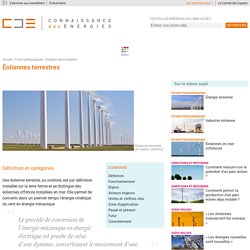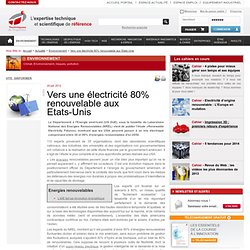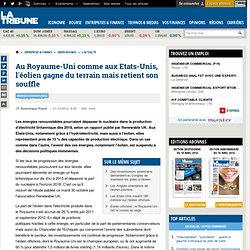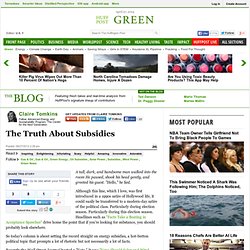

Nimby_wind.pdf (application/pdf Object) A L'Etape de La Maturité: L'Énergie Éolienne. FERC upholds previous ruling, asks BPA for equitable cost-sharing plan. The Federal Energy Regulatory Commission issued a ruling Thursday that asks the Bonneville Power Administration to come up with a better plan for handling periods of power oversupply.

The Federal Energy Regulatory Commission Thursday upheld its year-ago ruling that found that the Bonneville Power Administration was discriminating against wind power produces in its plan to require wind farms to power down during times of oversupply of power due to high water runoff. In the ruling issued Thursday, FERC essentially said while BPA was doing better in its equitable handling of oversupply events, the administration still needs to come up a more fair cost-sharing plan for that protocol.
In March, BPA filed a plan with FERC to compensate wind energy operators with a partial reimbursement for of missed revenue. This week, FERC essentially sided with wind energy operators saying that plan wasn't exactly equitable and giving the administration 90 days to come up with something else. Wind - Industry Analysis. Éoliennes terrestres : fonctionnement, enjeux et acteurs majeurs. Définition et catégories Une éolienne terrestre, ou onshore, est par définition installée sur la terre ferme et se distingue des éoliennes offshore installées en mer.

Elle permet de convertir dans un premier temps l’énergie cinétique du vent en énergie mécanique. Le procédé de conversion de l’énergie mécanique en énergie électrique est proche de celui d’une dynamo, convertissant le mouvement d’une roue en électricité alimentant les feux d’un vélo. L’énergie mécanique accumulée peut ensuite être directement utilisée afin de pomper de l’eau ou moudre du grain, comme le font les moulins. Aujourd’hui, dans la grande majorité des cas, l’énergie mécanique est transformée dans un second temps en énergie électrique. Les éoliennes à axe horizontal sont aujourd’hui la forme la plus courante d’éolienne terrestre. Un moteur permet d’orienter l’ensemble rotor-nacelle de l’éolienne afin de le placer face au vent.
Les deux modes d’exploitation de l’énergie éolienne terrestre. Vers une électricité 80% renouvelable aux Etats-Unis. Le Département à l’Energie américain (US DoE), sous la houlette du Laboratoire National des Energies Renouvelables (NREL) vient de publier l’étude «Renewable Electricity Futures» montrant que les USA peuvent passer à un mix électrique comprenant entre 30 et 90% d’énergies renouvelables d’ici 2050.

NR_583_web.pdf (application/pdf Object) L'éolien britannique et américain progresse mais retiennent leur souffle. Si les taux de progression des énergies renouvelables poursuivent sur leur lancée, elles pourraient alimenter en énergie un foyer britannique sur dix d'ici à 2015 et dépasser la part du nucléaire à l'horizon 2018.

C'est ce qu'il ressort de l'étude publiée ce mardi 30 octobre par l'association Renewable UK. La part de l'éolien dans l'électricité produite dans le Royaume s'est accrue de 25 % entre juin 2011 et septembre 2012. En dépit de positions politiques hostiles à cette énergie, en particulier de la part de parlementaires conservateurs mais aussi du Chancelier de l'Echiquier qui compromet l'avenir des subventions dont bénéficie le secteur, les investissements ont continué de progresser. Notamment grâce à l'éolien offshore, dont le Royaume-Uni est le champion européen, où ils ont augmenté de 60 % pour atteindre 1,5 milliard de livres sterling (1,16 milliards d'euros). Data Highlights - 27: Wind Tops 10 Percent Share of Electricity in Five U.S. States. April 04, 2012 Wind Tops 10 Percent Share of Electricity in Five U.S.

States. L'éolien aux USA fin de partie - Les énergie renouvelables - Climat de terreur. Claire Tomkins: The Truth About Subsidies. A tall, dark, and handsome man walked into the room He paused, shook his head gently, and greeted his guest.

"Hello," he lied. Although this line, which I love, was first introduced in a 1990s satire of Hollywood life, it could easily be transferred to a modern-day satire of the political class. Particularly during election season. Particularly during this election season. Headlines such as "Facts Take a Beating in Acceptance Speeches" drive home the point that if you're looking for substance, you should probably look elsewhere. Should the U.S. Shift More Energy Subsidies to Renewable Power?
Dear EarthTalk: Renewable-energy production in the solar and wind markets currently receives about $7 billion in government subsidies annually, but is still not competitive against fossil fuels on a large scale.

To what extent should the U.S. continue to prop up these industries as they compete against dirty energy? —Jack Morgan, Richmond, Va. Given the importance of abundant amounts of energy for Americans, the federal government tends to subsidize all forms of energy development, including fossil fuels and renewables. A recently released report by the Congressional Budget Office (CBO) found that in 2011 the federal government spent $16 billion of our tax dollars in subsidies for the development of renewable energy and increased energy efficiency, and only $2.5 billion in subsidies to the fossil fuel industry in the form of tax breaks.
Historically the vast majority of energy subsidies have gone to developing fossil fuel resources and reserves. Données Etats-Unis sur l'énergie éolienne. THE HIGH COST OF RENEWABLE ELECTRICITY MANDATES. Energy Policy & the Environment Report No. 10 February 2012 Robert Bryce, Senior Fellow, Manhattan Institute Motivated by a desire to reduce carbon emissions, and in the absence of federal action to do so, 29 states (and the District of Columbia and Puerto Rico) have required utility companies to deliver specified minimum amounts of electricity from "renewable" sources, including wind and solar power.

California recently adopted the most stringent of these so-called renewable portfolio standards (RPS), requiring 33 percent of its electricity to be renewable by 2020. Proponents of the RPS plans say that the mandated restrictions will reduce harmful emissions and spur job growth, by stimulating investment in green technologies. But this patchwork of state rules—which now affects the electricity bills of about two-thirds of the U.S. population as well as countless businesses and industrial users—has sprung up in recent years without the benefit of the states fully calculating their costs.
NIMBYism Kills 45% of Clean Energy Projects. Clean Power Published on October 24th, 2011 | by Stephen Lacey Almost half of clean energy projects proposed in recent years have been delayed or abandoned due to local opposition, according to a March report from the U.S.

Chamber of Commerce. That’s a lot of development potential denied. The causes of this opposition are diverse: Environmental concerns, worries about property values, suspicion of outside developers, and many more. In my opinion, one of the biggest problems is that much of that economic potential is not going directly to citizens. Detailed case against wind farms.pdf (application/pdf Object) Why Wind Energy? In the U.S., the greatest source of human-caused greenhouse gas emissions is the power sector, at about 38%.

The largest source of power is coal, which, even though it produces less than 40% of the power, produces over 70% of the power sector's greenhouse gas emissions. (20% of the greenhouse gas emissions are from natural gas-fired power plants.) Black_Veatch_20_Percent_Report.pdf (application/pdf Object) 20percent_wind_energy_report_revOct08.pdf (application/pdf Object) Wind Power to Reach 20% US Demand by 2030. Wind turbines in the US can now produce 50 gigawatts of electricity, or the equivalent of 11 nuclear power plants or 44 coal-fired plants, powering nearly 13 million American homes, according to the American Wind Energy Association. As wind power blows stronger across the country, some states like South Dakota and Iowa get as much as 20 percent of their total electricity from wind. 20percent_Summary_Presentation.pdf (application/pdf Object) 20% Windpower by 2030.
U.S. Energy Policy Faces New Choices, Limitations. What Exelon's Wind Energy Buy Means For the Future of Nuclear Power. Last Updated Sep 1, 2010 7:14 PM EDT Exelon (EXC) announced this week it was buying John Deere Renewables for as much as $900 million, a purchase that marks the company's entrance into the wind generation business and suggests its lack of confidence in a nuclear energy renaissance. As the largest U.S. utility owner and the country's biggest nuclear generator, Exelon's actions often foreshadow where the energy industry is headed. It wasn't so long ago that President Obama gave nuclear power a huge boost by endorsing the energy source in his State of the Union speech. A month later, the Energy Department announced $8.3 billion in government-loan guarantees to help Southern Co.
(SO) to build a new nuclear power plant -- the first in more than 30 years -- in Georgia. But in the months since, the momentum for the much-touted nuclear renaissance has slowed to a crawl for a number of reasons. Modified image uses photos from Flickr user Paul J. . © 2010 CBS Interactive Inc.. Wind energy in west Texas, Wind Turbines.
Winds Of Change Blow In Texas. West Texas is cowboy country. Here, scratching out a living is often dictated by what a cow can fetch, or what a barrel of oil brings. Dry, dusty towns are dotted with reminders of hard times: vacant motels; rusted cars parked at drive-in theaters that have long stood silent - theaters where crowds once flocked to see films that reflected their lives, like "Giant. " Set in West Texas, "Giant" told the real-life story of cattle barons refusing to change with the times. That resistance to change and the desire to preserve a way of life, still remains. But today, the cause of concern is different - with rusted and retired pump jacks standing as witnesses of booms and busts gone by, a new "giant" looms on the horizon: wind turbines.
They say everything is bigger in Texas, and windmills are no exception. U.S. energy independence? Don't hold your breath. (MoneyWatch) Gaining energy independence would be an enormous boon for the U.S. No other country could use a threat of cutting off supply as a geopolitical weapon, as OPEC did in the 1970s. A major contributor to the nation's trade imbalance would disappear, boosting the economy. Improved supply might even allow production to be focused on domestic needs first and not necessarily sent to such developing countries as China and India that are part of the global competition for energy sources. Wind farms in Pacific Northwest paid to not produce. Wind farms in the Pacific Northwest -- built with government subsidies and maintained with tax credits for every megawatt produced -- are now getting paid to shut down as the federal agency charged with managing the region's electricity grid says there's an oversupply of renewable power at certain times of the year.
The problem arose during the late spring and early summer last year. Rapid snow melt filled the Columbia River Basin. The water rushed through the 31 dams run by the Bonneville Power Administration, a federal agency based in Portland, Ore., allowing for peak hydropower generation. At the very same time, the wind howled, leading to maximum wind power production. As Wind Energy Use Grows, Utilities Seek to Stabilize Power Grid. Does Obama’s Re-Election Save the Wind Power Industry? Blowing in the Wind Much time was spent in energy circles discussion leading up to the election on how the outcome would affect the future of wind power in the U.S. The general consensus was that an Obama reelection would lead to an extension of the Production Tax Credit (PTC), and with his election the rescue of the wind industry in the U.S. Current turbine orders for U.S. delivery in 2013 sit near (if not at) zero, as the lack of support from the PTC makes it extremely difficult to produce wind power at a cost low enough to compete with natural gas derived electricity due to continued weakness in natural gas pricing.
5 Ways that Wind Power Can Survive Without a PTC Extension. Yesterday, I explained why Obama winning re-election is not necessarily an automatic savior for the wind power industry. Basically, an extension of the Production Tax Credit (PTC) is not a given (although I give it better than even odds), and the current extension being pushed by the American Wind Energy Association would act as little more than a band aid. While an extension of the tax credits is vital to a robust wind industry in the U.S., developers must start to consider strategic options for financing projects in a world without the PTC. Even with financing innovations, successfully putting together wind deals will be very difficult, and without these financing strategies there will be a period of time where virtually no wind projects will be financed or built in the U.S. (Read More: 5 Reasons Why Good Energy Projects Don’t Get Financed) The Wind Industry Gets to Draw Another Breath. Folladori_Wind_Power.pdf (application/pdf Object)
2011_wind_technologies_market_report.pdf (application/pdf Object) Wind and Solar Power Face Challenges in the New Year. On the surface, it looks like the renewable-energy industry has never been healthier. This year, wind-turbine installation in the U.S. actually outpaced the installation of new natural-gas capacity — despite the shale-gas boom, which has pushed down the price of natural gas. In 2012 new wind capacity reached 6,519 MW as of Nov. 30, just edging out gas capacity and more than doubling new coal installations.
Meanwhile, new solar capacity in the U.S. reached nearly 2,000 MW, beating out 2011’s numbers. Globally the stock of installed wind and solar power hit 307 GW in 2011, up from 50 GW in 2004, while total investment in the sector hit $280 billion last year. Swara Salih: The Promises and Challenges of Wind Power in the US. While wind energy can seem like a near-ideal solution to our environmental and energy issues, it has not been without its challenges in the United States. It has not been, so far, a major component of the energy market. US wind power consumption forecast to grow. US wind-generated electricity consumption is expected to grow at a high rate over the next two years, according to the latest industry forecast for First Research from INFORUM.
Taxpayers Shouldn't Subsidize Wind Energy They Don't Want, Don't Use - On Energy. Community Considerations - Socioeconomic Impact Analysis - The Wind Energy Industry. The above review suggests that many of the negative effects experienced by local towns are caused by extreme population growth spurred by job opportunities at energy facilities. However, utility-scale wind facilities employ relatively few individuals post-construction; for this reason, wind farms may not have the same socioeconomic effects as oil and gas facilities, though perhaps may be more similar to the effects from solar facilities.
Econ_dev_casestudies_overview.pdf (application/pdf Object) Wind Power Generation Beating Natural Gas in U.S. in 2012. Wind-turbine installations are poised to exceed natural gas-fueled power plants in the U.S. for the first time this year as developers race to complete projects before a renewable energy tax credit expires. New wind capacity reached 6,519 megawatts by Nov. 30, beating the 6,335 megawatts of gas additions and more than double those of coal, according to data from Ventyx Inc., which is owned by the Swiss power transmission equipment maker ABB Ltd. (ABBN) The company plans to release final tallies in January. Analyses of wind energy market. Wind energy industry SWOT analysis.
Excerpt_USWindPowerMarketsandStrategies2011.pdf (application/pdf Object) Changing Wind Farm Requirements - Wind Systems Magazine. Europe’s emerging energy markets set to grow while mature markets experience difficulties. Production Tax Credit for Wind Power Survives the Fiscal Cliff. Wind turbine syndrome nina piermont pdf free ebook download from www.windmolenparkautena.nl. Wind_Power_in_the_US.pdf (application/pdf Object) Ducker Worldwide Predicts Problems For US Wind Power Industry. Welcome to IEEE.tv. 52920.pdf (application/pdf Object) Power to the Offshore Windmills - Bruce Nussbaum. Green and Competitive: Ending the Stalemate. Clean Energy Can Fuel Competitiveness - Daniel C. Esty. From Oil Spills to Wind Farms, From NIMBY to BANANA - Sarah Green - Our Editors.
Renewable Energy: Winds at Our Back? Falling in Love with Wind. New Wind Energy Documentary Features Roscoe Wind Farm. History And Uses Of Wind Power As An Energy Alternative / Documentary Video - NASA Wind Energy Airborne Harvesting System Study. Ep_policy_stakeholders.pdf (application/pdf Object) Wind power.pdf (application/pdf Object) Revival Of Iconic California Condor Threatens State's Wind Farm Boom. All There is To Know About the Smart Grid and Renewables. Renewable Energy « Green Thoughts. FIRSTgradacademicnonKIRKLAND.pdf (application/pdf Object) Phadke Steel Forests.pdf (application/pdf Object) Cape Spin: An American Power Stuggle.
05-31-1colEnergySecurity.pdf (application/pdf Object) Windfall: Anti-Wind Documentary Looks Way Overblown (Video) The Sunday Edition with Michael Enright. Documentary Tracks the Pros and Cons of Wind Energy. Winds of Change: Full Documentary. CHRG-112hhrg66728.pdf (application/pdf Object) CHRG-112hhrg66362.pdf (application/pdf Object) 41869.pdf (application/pdf Object)
50400.pdf (application/pdf Object) CRPT-112hrpt300-pt1.pdf (application/pdf Object) Wind energy development in the United States : can state-level policies promote efficient development of wind energy capacity?